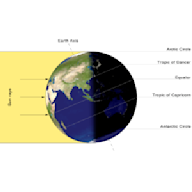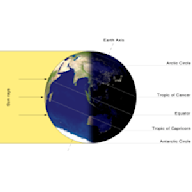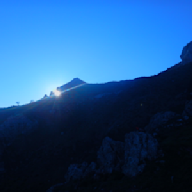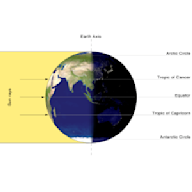Search results
Summer Solstice: The earth goes around the sun in an elliptical orbit. The nights are longer than the days of the winter season. This position of the earth is called as the summer solstice. Winter Solstice: On 22nd December, the Tropic of Capricorn gets direct rays of the sun as the South Pole tilts towards it. It is summer in Southern ...
Summer solstice: Winter solstice: In the Northern Hemisphere the longest day and the shortest night occur on 21st June. At this time in the Southern Hemisphere it occurs the shortest day and the longest night. This position of the earth is called summer solstice. In the Northern Hemisphere the shortest day and the longest night occur on 22nd ...
Summer solstice and winter solstice are two astronomical events that occur twice in a year. In this response, we will explain in details what summer solstice and winter solstice are, and their significance.Summer SolsticeSummer solstice is an astronomical event that occurs around June 20-22 in the Northern Hemisphere and around December 20-23 in the Southern Hemisphere.
Difference between the summer solstice and winter solstice. View Solution. Q3.
Because of the difference in the tilt towards the axis, the phenomenon of experiencing the solstice occurs. But as earth is tilted, one hemisphere will be near the sun and one will be away from the sun at given point of time. So, logically there will be a difference in the timings of the summer solstice and winter solstice.
What is summer solstice for Class 6 2024 is part of Class 6 preparation. The Question and answers have been prepared according to the Class 6 exam syllabus. Information about What is summer solstice covers all topics & solutions for Class 6 2024 Exam.
Let's delve into the differences between these two solstices in detail.Summer Solstice:The summer solstice, also known as midsummer, occurs around June 20th or 21st in the Northern Hemisphere and December 21st or 22nd in the Southern Hemisphere. Here are the key characteristics of the summer solstice:1.
The longest day and the shortest night at these places occur on 21st June. At this time in the Southern Hemisphere all these conditions are reversed. It is winter season there. The nights are longer than the days. This position of the earth is called the Summer Solstice.
A year is typically split into four seasons: summer, winter, spring, and autumn. Revolution of Earth and Change in Seasons. Summer Solstice. On 21st June, the Northern Hemisphere experiences the Summer Solstice, with the North Pole tilted towards the sun. The sun's rays fall directly on the Tropic of Cancer, resulting in more heat.
(a) Summer solstice: The Northern Hemisphere is tilted towards the sun on 21 st June. As the rays of the sun fall directly on the Tropic of Cancer, these areas receive more heat. But the areas size to the poles receive less heat due to the slanting rays of the sun.





